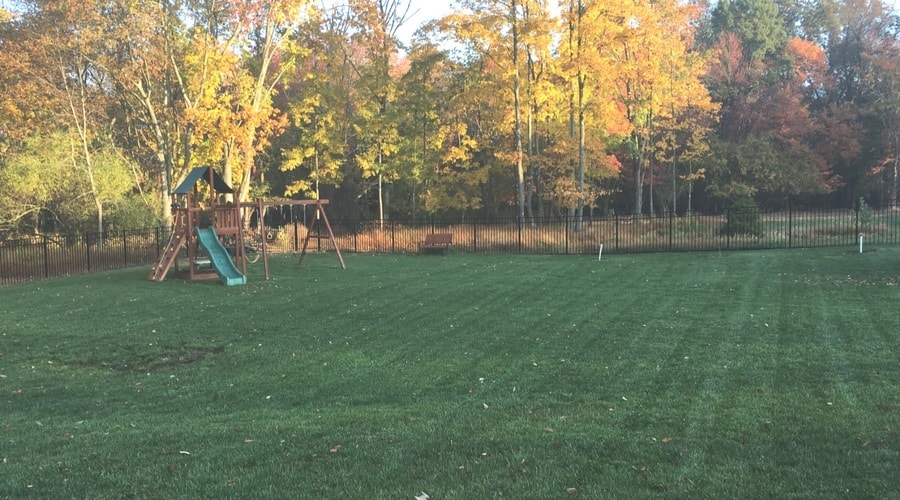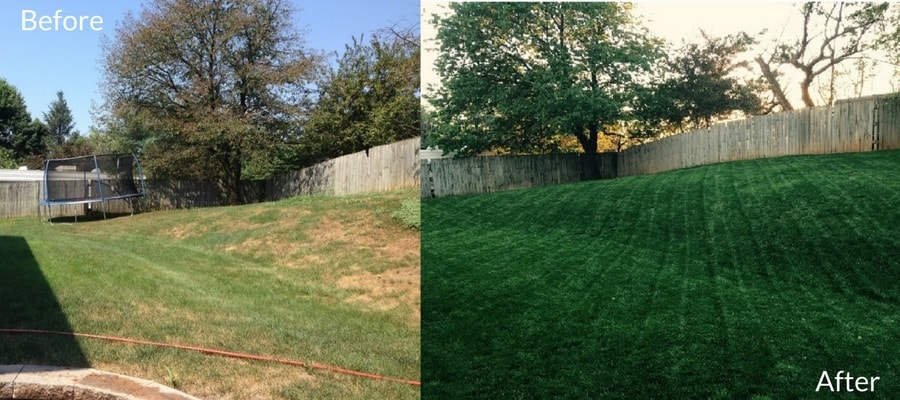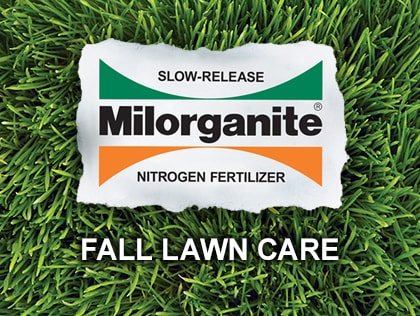Do One Thing This Fall to Improve Your Lawn
- horticulturist and gardening expertAugust 28, 2017
Lawns serve a variety of functions in the landscape. They provide unity, continuity, pathways, and play areas. Plus they keep our feet from getting muddy when it rains. Lawns also keep our environment cooler, remove dust and pollutants from the air and reduce storm water runoff into our storm sewers and waterways.

And just like all plants, lawns require maintenance. Many homeowners worry about the time and resources needed to keep their lawns healthy. But there is one thing you can do this fall, fertilize, to improve your lawn and reduce weeds.
Fertilize with Milorganite, a low nitrogen slow release fertilizer around Labor Day. It helps improve the soil, while providing needed nutrients.
This fertilizer application helps your lawn recover from the stress of summer. And as the temperatures begin to cool the lawn focuses its energy on root growth and spreading outward instead of growing upward. This one fertilization can boost your lawn’s density so it is better able to compete with weeds and tolerate environmental stress.
Continue to leave clippings on the lawn. These return nutrients, moisture and organic matter to the soil. It’s free fertilizer applied every time you mow the lawn.
Increase the quality and improve the lawn’s ability to withstand and recover from use with a second application. Apply Milorganite between mid-October and Thanksgiving but before the ground freezes. Those growing warm season grasses should make the last application in early October at least one month prior to the first killing frost.
No need to purchase a winterizing fertilizer. Research discovered that as the microorganisms work on releasing the nutrients from the Milorganite pellets they also make some of the phosphorous, which promotes root development, as well as potassium, which promotes hardiness and disease resistance, that is bound to the soil available to the grass plants.

Once you see the improvement in your lawn, you may be inspired to adopt the holiday fertilization schedule. Adding one or two additional fertilizer applications can greatly increase your lawn’s health, vigor, wear resistance and ability to tolerate drought and pests.
Those growing warm season grasses can begin fertilizing around Easter once the grass begins growing. Make additional applications around Memorial Day and the recommended fall date. Those growing cool season grasses should wait until Memorial Day to start fertilizing in addition to the two fall applications. Add a mid-summer application of slow release fertilizer for irrigated lawns.
Fall fertilization is the first step in growing a healthy lawn next year. Do this one thing this fall and you will decrease your lawn care challenges and workload next year.


